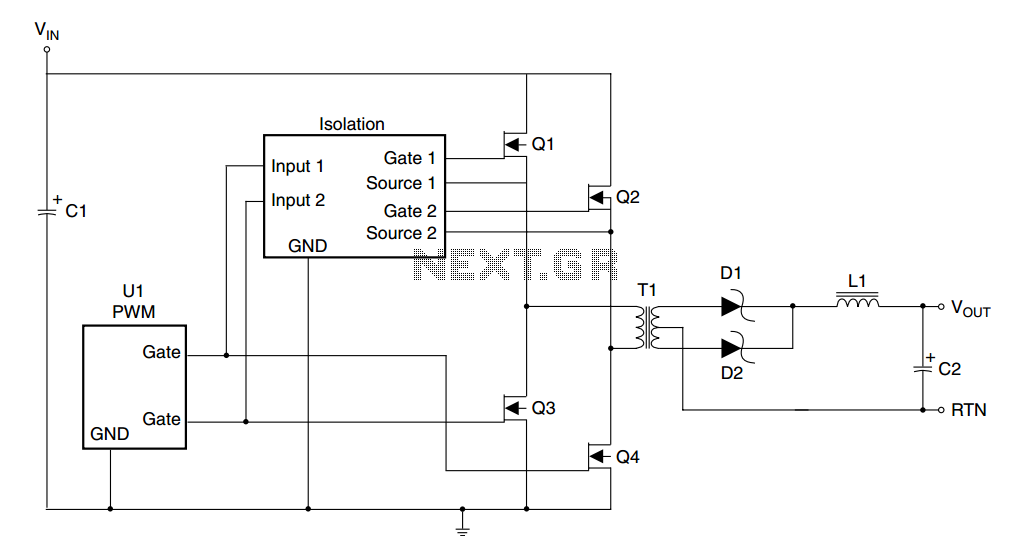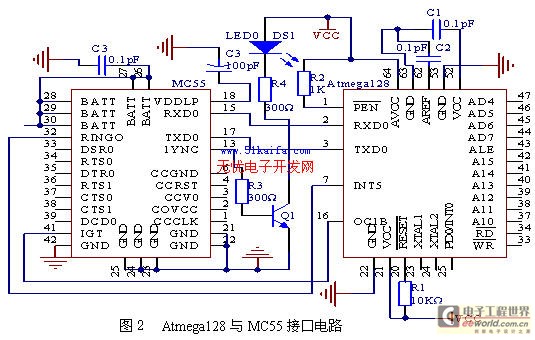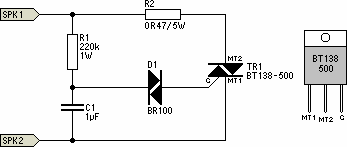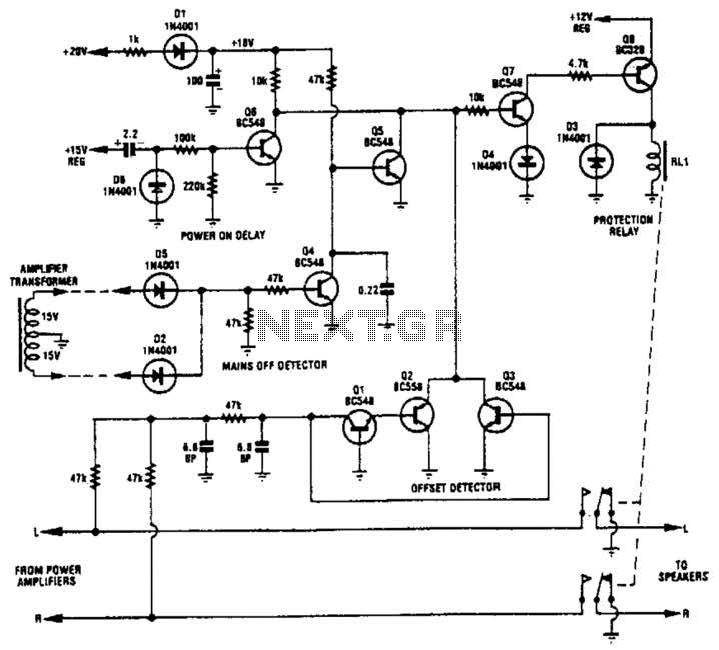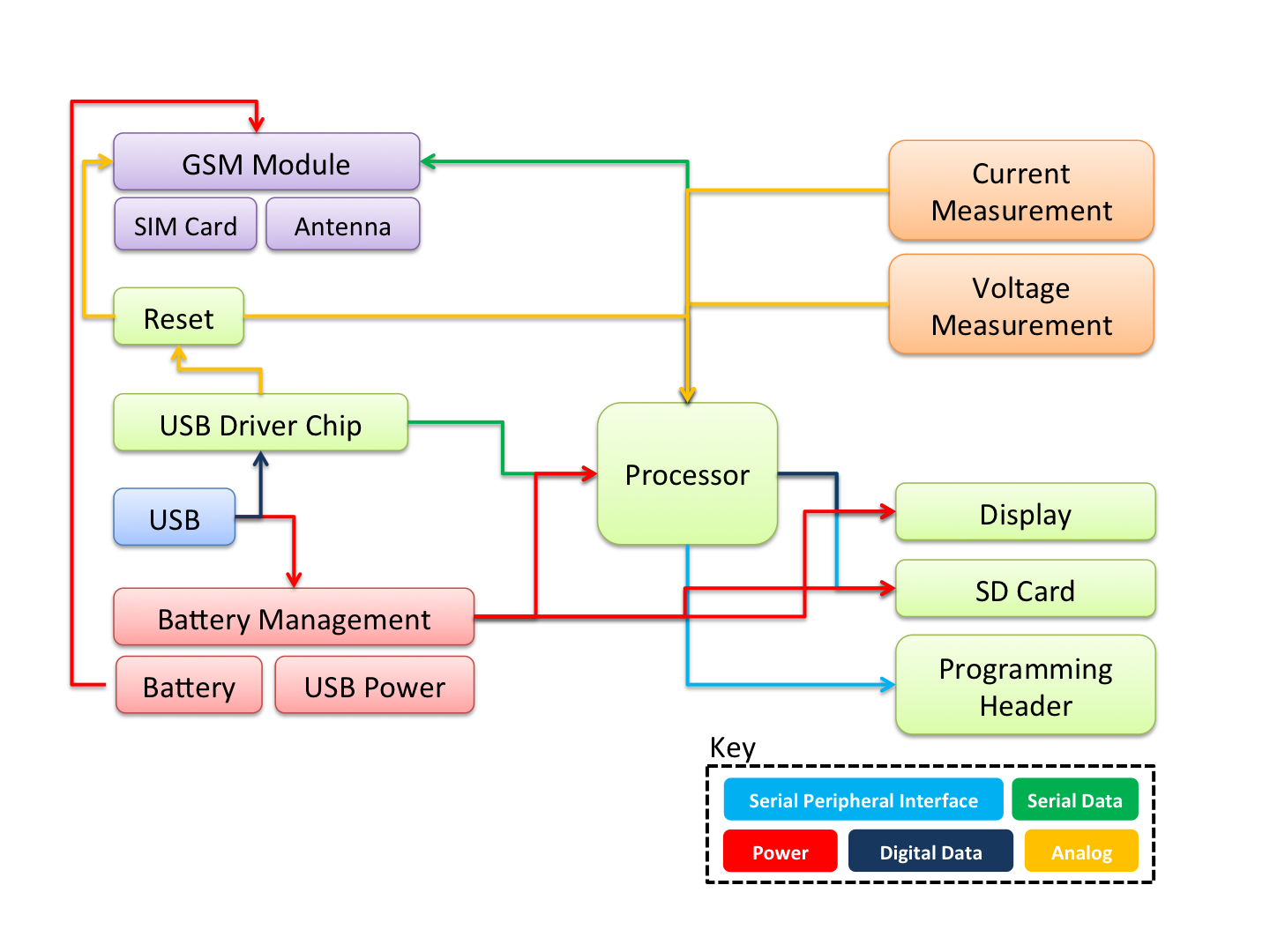
Overview of 2.1 (Satellite/Subwoofer) Speaker Systems
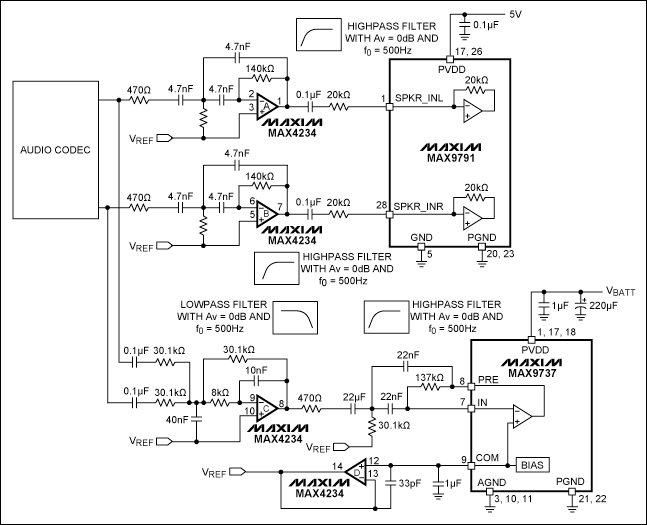
This application note explains how to implement a 2.1 (satellite/subwoofer) audio power-amplifier system with 2 x 2W and 1 x 7W of output power from a single 5V power supply.
The described 2.1 audio power-amplifier system is designed to deliver a total output of 11 watts, effectively distributing audio signals across two satellite speakers and one subwoofer. The system utilizes a single 5V power supply, which simplifies the design and enhances efficiency by minimizing power loss.
The architecture of the amplifier system typically comprises two separate channels for the satellite speakers, each capable of delivering 2 watts of output, and one channel dedicated to the subwoofer, which provides 7 watts of output power. The choice of a 5V power supply is advantageous as it is commonly available and easily integrated into various applications, including portable and battery-operated devices.
The amplifier circuit can be built using integrated circuits that are optimized for low-voltage operation. For the satellite channels, Class-D amplifier ICs are often employed due to their high efficiency and compact size. These amplifiers convert the input audio signal into a pulse-width modulated (PWM) signal, which is then used to drive the speakers with minimal heat generation.
For the subwoofer channel, a more powerful amplifier capable of handling the increased output is necessary. This may involve a dedicated Class-D or Class-AB amplifier, depending on the desired audio fidelity and efficiency. The circuit design should include appropriate filtering components, such as inductors and capacitors, to ensure that the audio signals are clean and free of distortion.
In addition to the amplifier circuits, the design may also incorporate a crossover network to manage the frequency distribution between the satellite speakers and the subwoofer. This network ensures that the subwoofer only receives low-frequency signals, while the satellite speakers handle mid to high frequencies, resulting in a balanced audio output.
Overall, the implementation of a 2.1 audio power-amplifier system with the specified output power from a single 5V power supply is a practical solution for enhancing audio performance in compact electronic devices. The careful selection of components and circuit design will significantly influence the system's overall sound quality and efficiency.Application note explains how to implement a 2.1 (satellite/subwoofer) audio power-amplifier system with 2 x 2W and 1 x 7W of output power from a single 5V power supply.. 🔗 External reference
The described 2.1 audio power-amplifier system is designed to deliver a total output of 11 watts, effectively distributing audio signals across two satellite speakers and one subwoofer. The system utilizes a single 5V power supply, which simplifies the design and enhances efficiency by minimizing power loss.
The architecture of the amplifier system typically comprises two separate channels for the satellite speakers, each capable of delivering 2 watts of output, and one channel dedicated to the subwoofer, which provides 7 watts of output power. The choice of a 5V power supply is advantageous as it is commonly available and easily integrated into various applications, including portable and battery-operated devices.
The amplifier circuit can be built using integrated circuits that are optimized for low-voltage operation. For the satellite channels, Class-D amplifier ICs are often employed due to their high efficiency and compact size. These amplifiers convert the input audio signal into a pulse-width modulated (PWM) signal, which is then used to drive the speakers with minimal heat generation.
For the subwoofer channel, a more powerful amplifier capable of handling the increased output is necessary. This may involve a dedicated Class-D or Class-AB amplifier, depending on the desired audio fidelity and efficiency. The circuit design should include appropriate filtering components, such as inductors and capacitors, to ensure that the audio signals are clean and free of distortion.
In addition to the amplifier circuits, the design may also incorporate a crossover network to manage the frequency distribution between the satellite speakers and the subwoofer. This network ensures that the subwoofer only receives low-frequency signals, while the satellite speakers handle mid to high frequencies, resulting in a balanced audio output.
Overall, the implementation of a 2.1 audio power-amplifier system with the specified output power from a single 5V power supply is a practical solution for enhancing audio performance in compact electronic devices. The careful selection of components and circuit design will significantly influence the system's overall sound quality and efficiency.Application note explains how to implement a 2.1 (satellite/subwoofer) audio power-amplifier system with 2 x 2W and 1 x 7W of output power from a single 5V power supply.. 🔗 External reference
Warning: include(partials/cookie-banner.php): Failed to open stream: Permission denied in /var/www/html/nextgr/view-circuit.php on line 713
Warning: include(): Failed opening 'partials/cookie-banner.php' for inclusion (include_path='.:/usr/share/php') in /var/www/html/nextgr/view-circuit.php on line 713
